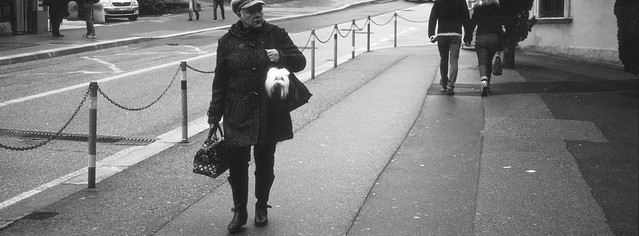I’ve always been aware of the existence of Agfa Scala film, but never got around to using it. I even had a few rolls, with prepaid processing at Joe’s Basement in Soho, London. Both are now gone. Well, at least that’s what the internet says. Joe’s, certainly, sadly shut up shop quite a while ago, and Agfa-Gevaert discontinued Scala around 2004, I think, shortly before parachuting out of the photography business altogether. There are still a few rolls floating around on eBay or elsewhere with a process by data of 2009. So that’s it … or is it ? Because, strangely, I have in front of me a 5 pack of Agfa Scala 200X, produced, apparently, by AgfaPhoto, in Leverkussen, Germany, and with a quite healthy expiry date of October 2014.
So what’s so special about this film ? Well, first, it is one of the very, very few black & white reversal films (“slide films” to you & me) ever produced. It is nominally rated at ISO 200, but can be used up to 1600 with no problem (although apparently not if it is expired). Second, it produces smooth, crisp photos with a very wide tonal range and a sensitivity that touches on the infrared. Third, and most important, it a niche within a niche on an obscure periphery, and totally and utterly pointless in 2013. And its provenance is a little mysterious. Therefore, irresistible.
I was a little bit nervous about using it - I’m a complete novice when it comes to black & white film, but then on the other hand, it is essentially a slide film, which I’m quite familiar with. Anyway, I loaded the first roll into my XPan, rated it a 400 ISO and just trusted it’s ever reliable meter, and tweaking it up by half a stop, just so that I felt in control. And I wandered around the upper part of Colle di Val d’Elsa in Tuscany and took a few photos. Twenty one, to be precise.

My first 18 Agfa Scala panoramic shots, including 2 fantastic shots of the inside of a lens cap. Aren’t rangefinders great ?
Scanning Agfa Scala is easy, just so long as you don’t use any kind of infra-red cleaning (like Digital ICE or LIDE). I discovered this to my cost after about 15 time consuming HDR scans. And HDR scanning (in Silverfast terminology) is also not really necessary in this case. Also, don’t trust auto focus. Otherwise, no problem. I scanned at 16 bit grayscale - there might be some advantage to 48 bit RGB, but I haven’t had time to experiment. Here are a few examples:




Of course, these are reduced down to 590 pixels wide. The scans are 12500 pixels wide, and the detail is pretty amazing.
So, although I’m very, very late to the party, it’s not over yet, and I’m discovering that Scala 200X is fun to use. What its status or future is, I really don’t know, and neither, it seems, does the internet. Although it carries AgfaPhoto branding, and AgfaPhoto acquire trademark and marketing rights over a range of Agfa Films (see here, although word has it that Agfa CT Precisa 100 is none other than my old friend Fuji Provia 100F in disguise), Scala 200XT is
not mentioned on the website. So, I’m going to buy a few more rolls while I can. You can too, but only if you email me to ask for the details, I’m not making that mistake again! Processing is still carried out by a number of labs in Europe at least, including
Studio 13 in Zürich.








